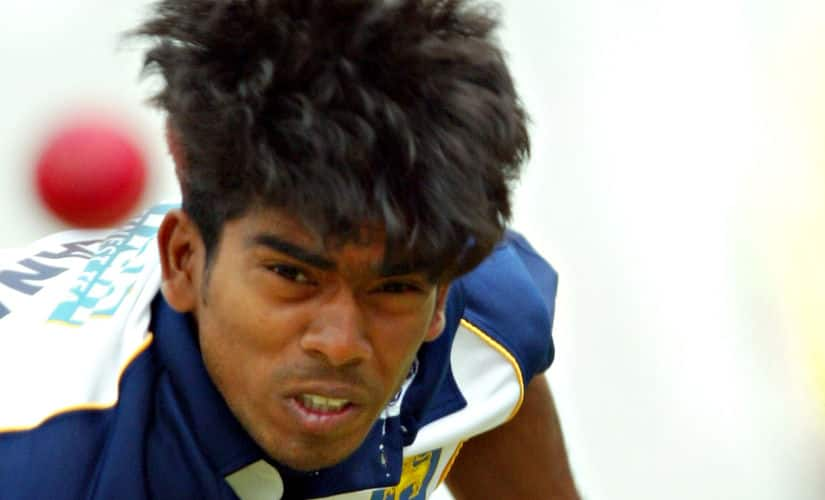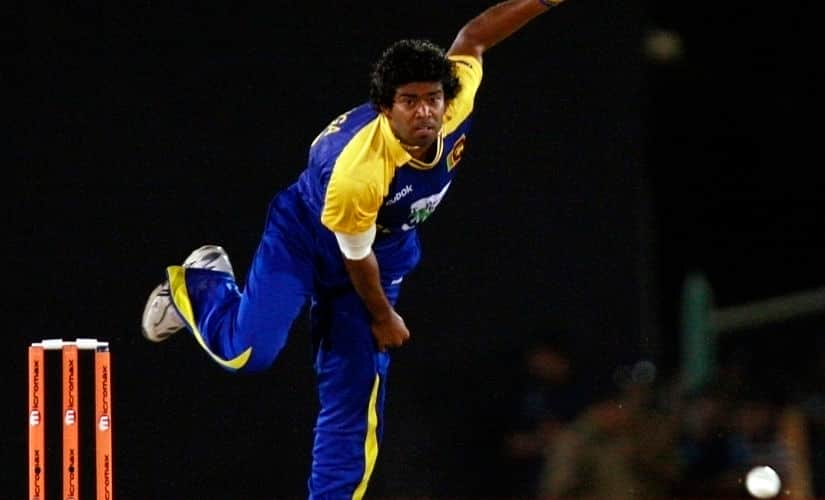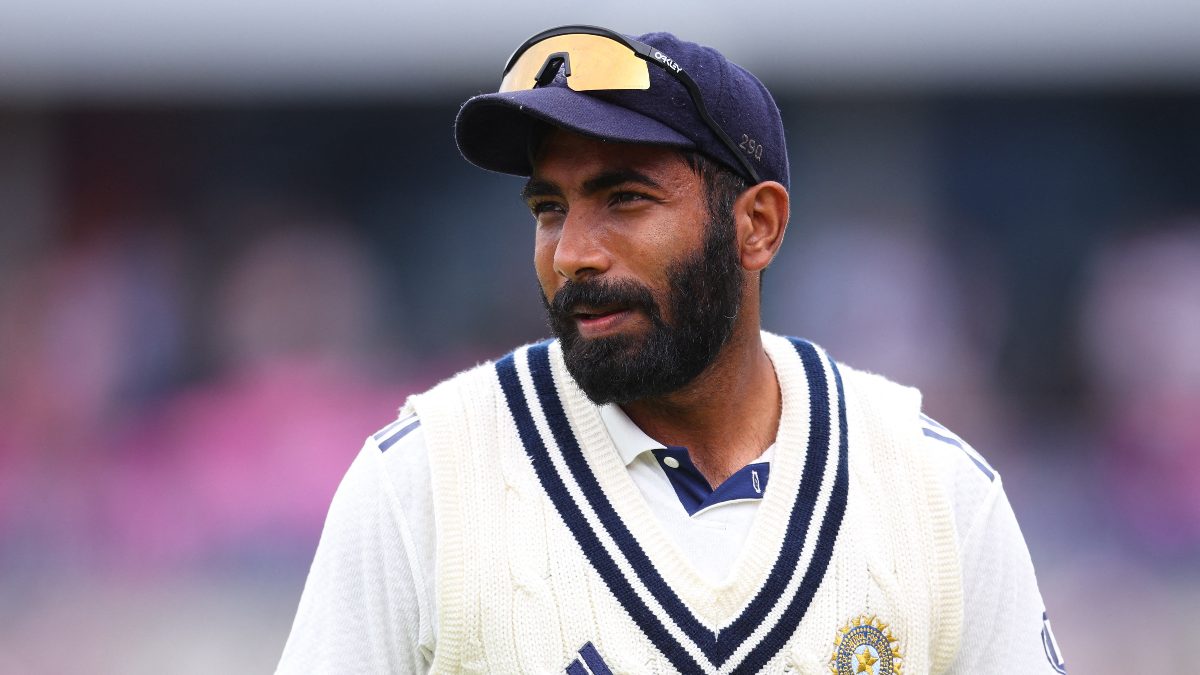In 2004, the Asia Cup was hosted by Sri Lanka after a gap of four years. On 17 July 2004, the hosts were playing against the United Arab Emirates in their first group match and decided to field a 21-year-old Galle-born-speedster who was making waves in the domestic circuit — Separamadu Lasith Malinga. The innocent-looking youngster returned with figures of 1/39, scalping the wicket of the opposition captain Khurram Khan. Malinga made his debut in a team that had the likes of Sanath Jayasuriya, Mahela Jayawardene, Muttiah Muralitharan and Kumar Sangakkara who shared close to 750 matches worth of experience among them. On Thursday, Sri Lanka squared off against India in the fourth ODI of the 5-match series that the island nation were trailing 0-3. [caption id=“attachment_3997571” align=“alignnone” width=“825”] Lasith Malinga in action in the 4th ODI against India. AP[/caption] India was cruising at 225 for the loss of one wicket in the 30th over when a full, wide ball from Malinga was treated with utter disdain by Virat Kohli only to help it straight into the arms of the deep cover, after destroying the Lankan bowling attack enroute a scintillating 131. This was stand-in-captain Malinga’s 300th wicket and there was celebration but the usual vigour was missing. He was leading a side plagued with injuries and inconsistencies, whitewashed by the visitors in the Test series 3-0 and on the verge of a similar fate in the five-match ODI series. With 203 matches, Malinga was the senior-most player of the team whose total match experience was almost half of just four players combined at the time he made his debut in 2004. In 2004, when the Sri Lankan pacer made his debut, the national cricket team was ranked 3rd in the ICC ODI rankings. Though he just played three ODI matches in 2004 and a solitary match in 2005, it was the year 2006 that saw the rise of Lasith Malinga in limited overs cricket. In the 16 matches, he scalped 29 wickets with an astounding average of 22.54 and an economy rate of 4.72. [caption id=“attachment_3997535” align=“alignnone” width=“825”]
 File Image of Lasith Malinga from his 2004 debut. Reuters[/caption] Sri Lanka were the second ranked ODI team that year. The year 2007 saw the speedster, whose unique hairstyle was as famous as his on-field exploits, become a wicket-taking machine that saw him become the only bowler to have taken four wickets in four balls. He achieved this feat against South Africa in the World Cup. In the 20 ODIs he played that year, he claimed 33 wickets at an average of 22.54 giving just 4.72 runs per over. Sri Lanka lost to Australia in the World Cup final and hovered around the mid-level in the ranking table. A rather subdued 2008 was followed by a horrendous 2009 that saw Malinga play just 11 matches picking 11 wickets at a shoddy average of 55.45, giving away 6.21 runs per over. This phase also saw Sri Lanka drop to seven in the ICC ODI rankings. It became clear that Sri Lanka’s limited overs performance started revolving around the form of their premium speedster and the chinks had started appearing in Malinga and Sri Lanka’s armour. However, whenever Malinga has seen a slump he has followed it up with a record-breaking year like 2010 that saw him picking up wickets every 20.50 balls giving away just 4.24 runs per over. Sri Lanka were ranked third in the ODI rankings in 2010. [caption id=“attachment_3997625” align=“alignnone” width=“825”]
File Image of Lasith Malinga from his 2004 debut. Reuters[/caption] Sri Lanka were the second ranked ODI team that year. The year 2007 saw the speedster, whose unique hairstyle was as famous as his on-field exploits, become a wicket-taking machine that saw him become the only bowler to have taken four wickets in four balls. He achieved this feat against South Africa in the World Cup. In the 20 ODIs he played that year, he claimed 33 wickets at an average of 22.54 giving just 4.72 runs per over. Sri Lanka lost to Australia in the World Cup final and hovered around the mid-level in the ranking table. A rather subdued 2008 was followed by a horrendous 2009 that saw Malinga play just 11 matches picking 11 wickets at a shoddy average of 55.45, giving away 6.21 runs per over. This phase also saw Sri Lanka drop to seven in the ICC ODI rankings. It became clear that Sri Lanka’s limited overs performance started revolving around the form of their premium speedster and the chinks had started appearing in Malinga and Sri Lanka’s armour. However, whenever Malinga has seen a slump he has followed it up with a record-breaking year like 2010 that saw him picking up wickets every 20.50 balls giving away just 4.24 runs per over. Sri Lanka were ranked third in the ODI rankings in 2010. [caption id=“attachment_3997625” align=“alignnone” width=“825”] Sri Lanka’s Lasith Malinga bowls against Pakistan during their match in the 2010 Asia Cup one-day international cricket tournament in Dambulla. Reuters[/caption] It was riding on such performances that ‘Slinga Malinga’ took Sri Lanka to their second consecutive World Cup final, where they faced India. Though it wasn’t to be the year Sri Lanka would repeat their 1996 heroics, Malinga ended the campaign with 13 wickets from seven matches including his second hat-trick in a World Cup. Overall in the year 2011, Malinga had a staggering average of 19.39 giving away 4.79 runs per over in the 22 matches he took to pick 45 wickets. Sri Lanka were once again just a rank away from topping the table of the ODI rankings. But, it was also the year when the core players of the Sri Lankan team started calling it a day. Muralitharan retired in 2011. The next couple of years saw the team finding its feet and they were ranked fifth in the table even as Malinga took 86 wickets in the 61 matches. After finding some composure in the team, Malinga led Sri Lanka to its first T20 World Cup in 2014 and ended the year with 29 wickets in 17 ODI matches, chaperoning the bowling department and playing a crucial role in the Lions’ resurgence as the team sprung back to the second spot in the ODI rankings. [caption id=“attachment_3997669” align=“alignnone” width=“825”]
Sri Lanka’s Lasith Malinga bowls against Pakistan during their match in the 2010 Asia Cup one-day international cricket tournament in Dambulla. Reuters[/caption] It was riding on such performances that ‘Slinga Malinga’ took Sri Lanka to their second consecutive World Cup final, where they faced India. Though it wasn’t to be the year Sri Lanka would repeat their 1996 heroics, Malinga ended the campaign with 13 wickets from seven matches including his second hat-trick in a World Cup. Overall in the year 2011, Malinga had a staggering average of 19.39 giving away 4.79 runs per over in the 22 matches he took to pick 45 wickets. Sri Lanka were once again just a rank away from topping the table of the ODI rankings. But, it was also the year when the core players of the Sri Lankan team started calling it a day. Muralitharan retired in 2011. The next couple of years saw the team finding its feet and they were ranked fifth in the table even as Malinga took 86 wickets in the 61 matches. After finding some composure in the team, Malinga led Sri Lanka to its first T20 World Cup in 2014 and ended the year with 29 wickets in 17 ODI matches, chaperoning the bowling department and playing a crucial role in the Lions’ resurgence as the team sprung back to the second spot in the ODI rankings. [caption id=“attachment_3997669” align=“alignnone” width=“825”] Sri Lanka’s T20 cricket captain Lasith Malinga poses for a photograph with the World Cup trophy at the Sri Lankan Parliament. AFP[/caption] However, the next two years saw Sri Lanka dealing with a double blow as the essential cogs in their batting line-up — Mahela Jayawardene and Kumar Sangakkara retired one after the other in 2014 and 2015. A disappointing 2015 saw Sri Lanka bowing out of the World Cup in the quarter-final and slumping back to the fifth position and Malinga was struck with a knee injury. The injury put him out of action and forced him to take a break from all domestic and international assignments for a year. With Tillakaratne Dilshan, the last remaining member of the old guard, retiring in 2016, Sri Lanka dropped to sixth place in the ODI rankings. Malinga returned from his injury and played his first match in February 2017. With increasing concerns about his fitness and performing abilities, Sri Lanka faced its worst slump in more than a decade. The Island nation is presently ranked eighth and Malinga has just managed to take nine wickets in the 12 matches so far with an abysmal average of 65.33 and leaking out 6.13 runs per over. With Sri Lanka’s automatic qualification for the 2019 World Cup under jeopardy, these are worrying times for the team and their spearhead. On 31 August, Malinga captained Sri Lanka to its biggest loss in terms of runs in a home ODI and the usual jest and fervour with which Malinga
said he is ready to play till the 2023 World Cup in the pre-match press conference gave way to a solemn realisation after the defeat. [caption id=“attachment_3997697” align=“alignnone” width=“825”]
Sri Lanka’s T20 cricket captain Lasith Malinga poses for a photograph with the World Cup trophy at the Sri Lankan Parliament. AFP[/caption] However, the next two years saw Sri Lanka dealing with a double blow as the essential cogs in their batting line-up — Mahela Jayawardene and Kumar Sangakkara retired one after the other in 2014 and 2015. A disappointing 2015 saw Sri Lanka bowing out of the World Cup in the quarter-final and slumping back to the fifth position and Malinga was struck with a knee injury. The injury put him out of action and forced him to take a break from all domestic and international assignments for a year. With Tillakaratne Dilshan, the last remaining member of the old guard, retiring in 2016, Sri Lanka dropped to sixth place in the ODI rankings. Malinga returned from his injury and played his first match in February 2017. With increasing concerns about his fitness and performing abilities, Sri Lanka faced its worst slump in more than a decade. The Island nation is presently ranked eighth and Malinga has just managed to take nine wickets in the 12 matches so far with an abysmal average of 65.33 and leaking out 6.13 runs per over. With Sri Lanka’s automatic qualification for the 2019 World Cup under jeopardy, these are worrying times for the team and their spearhead. On 31 August, Malinga captained Sri Lanka to its biggest loss in terms of runs in a home ODI and the usual jest and fervour with which Malinga
said he is ready to play till the 2023 World Cup in the pre-match press conference gave way to a solemn realisation after the defeat. [caption id=“attachment_3997697” align=“alignnone” width=“825”] Sri Lankan captain Lasith Malinga of Sri Lanka celebrates after taking the wicket of team captain Virat Kohli of India. Reuters[/caption] Malinga
said, " In the Zimbabwe and India series I couldn’t play well. I’ll see where I’m at after this series, and evaluate how long I can play given the way my body is. No matter how experienced I am, if I can’t win a match for the team and do what the team needs, there’s no point in me being here. If I can’t deliver that, then I’ll happily retire." With his lethal in-swinging yorkers losing its sting, the dipping slow deliveries not effective so far and the pacer becoming a pale shadow of the bowler who tormented cricketers in the limited-overs, the biggest question that arises is, should he call it a day? Well, statistically, Malinga has always come back stronger whenever he had a bad year. One bad series against India shouldn’t cause alarm bells to ring as he has always struggled against the team. For a pacer who has had enormous success against most Test playing nations, it comes as a surprise that it is against Indians that he has failed to deliver. In the 34 matches he has played against India, he has taken only 39 wickets at an average of 45.33, leaking close to 6.10 runs per over. Both Sri Lanka and Malinga have had uncannily similar fortunes in limited overs cricket so far. Following the highs and lows of the pacer’s career holds a mirror to the rise, fall, resurgence and slump of the Lions. Self doubts seem to have already started creeping in. It will require a massive effort from both Malinga and Sri Lanka to usher in any form of resurrection. If Malinga does have enough fuel in him for the final push, then Sri Lanka would be desperately hoping that the trend of similar fortunes continues.
It became clear that Sri Lanka’s limited overs performance started revolving around the form of Lasith Malinga, their premium speedster.
Advertisement
End of Article


)




